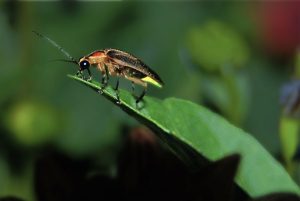Firefly populations worldwide are disappearing as urban development decimates habitats and pushes nearly one-third of species to the brink of extinction.
“We were lucky to have it all we did, but things are changing, and it doesn’t normally change as dramatically as this. And just what once was beautiful, you realize is no longer there,” said Lynn Faust, a firefly educator and park consultant.
A staple of the southern summer evening, fireflies are found in warm, humid environments, with over 2,000 species occupying all continents except Antarctica. A chemical reaction between luciferin and oxygen in their tails creates their trademark glow, creating a “cold light” that emits no heat and is entirely energy efficient.
“When I saw fireflies for the first time, it was love at first sight. It just fulfills the missing part I was looking for – I think it was so magical,” said Wan F. A. Jusoh, a biodiversity and conservation professor at Monash University, Malaysia, and a firefly researcher.
Jusoh’s experience is common; firefly tourism has become a growing industry as millions of Americans flock to southeast states during the summer months to watch fields of the widely-loved insect light up the night.

“Even in the 70s and 80s, people would take their folding lawn chairs, drive down the main road, and sit on the road or in people’s yards to watch the beautiful lighting bug display. Not synchronous, but every bit as beautiful; thousands of flashing lights,” Faust said.
However, federal and state governments have given little funding to scientists and universities to investigate these insects. Researchers have only recently uncovered more about fireflies’ role in the environment and their indication of habitat degradation.
According to Richard Joyce, a conservation biologist at the Xerces Society, fireflies are predators and play the same role as larger predators in maintaining ecosystem function, stability, and diversity, just on a less visible scale. They influence soil composition and the ground level of wetlands, forests, and grasslands.
“They act as a measure of the health of an ecosystem through the act of balancing,” Jusoh said. “Every life stage of fireflies occupies a different or unique habitat, which is also a habitat for other wildlife. If you destroy one habitat of larval fireflies, you also destroy the habitat of their prey – snails, in this case. So if you remove one, then you’re not going to get a complete part of an ecosystem.”
Firefly decline is attributed to habitat loss and environmental degradation. As governments urbanize large swaths of nature, they introduce light pollution, noise pollution, and acid deposition while simultaneously eradicating entire firefly ecosystems.
According to Ben Pfeiffer, founder of the nonprofit organization Firefly Conservation & Research, these combined factors over the past 150 years have led to about 18% of known firefly species being identified as critically endangered or extinct and have created isolated populations that cannot exchange genetic information and adapt to their changing environments.
“Firefly extinction would mean the loss of a cherished experience that humans place a cultural and aesthetic value on,” Joyce said. “We often hear people talk wistfully about not seeing fireflies like they used to, as habitats are lost or degraded and populations decline.”
Despite fireflies’ cultural and environmental value, conservation works often don’t focus on them due to a lack of information and the fact that thousands of other species are threatened or critically endangered. According to Jusoh, policymakers require enough information about a species to implement protection measures – since firefly research is relatively recent, governments globally prioritize other species.
Until there is common awareness and information about the importance of fireflies, populations will continue to decline. Additionally, according to Joyce, insects aren’t at the forefront of conservationists’ minds.

“Fireflies are a bit like wildflowers in California; their spectacular displays can get a lot of attention for a brief amount of time, and then people forget that these species and their habitats have year-round conservation needs,” Joyce said. “Also, even though fireflies are universally well-loved and recognized, insects aren’t what comes to mind for most people when they hear the words ‘wildlife’ or ‘wildlife conservation.’”
Southern American residents who grew up with fireflies in their backyard note the dangerous developments occurring in previously untouched spaces of nature. They are some of the main drivers for federal protection of firefly habitats as they watch developers eliminate significant ecosystems to aid urban sprawl.
“New buildings are developing horribly, with no planning and concern for nature. I’ve tried to fight it, but you really can’t fight the government. I haven’t given up, but I will lose, and I know that,” Faust said. “We have this unusual little wetland where the dozers have moved in, and by this time next year, the swamp will die. I’ve said goodbye to it three different nights because once I got there, I realized there was even more than I thought there, and it has several species that I’ve never found anywhere else in our county – and they’ll be gone.”
While individual efforts to preserve firefly habitats may not reap beneficial results, larger-scale conservation projects that aim to educate the public can push policymakers to pay attention to the smaller creatures.
“A lot of city council members are largely uneducated to firefly decline issues and pollinators and are more focused on driving economic development than they are on protecting native spaces,” Pfeiffer said. “So if you go and make your voice heard, and just say, ‘Hey, maybe we should allow more parks in these residential developments, and maybe the city should push for this.’ Just letting your voice get heard would be a great way to do it. People can also certify their own property as a firefly habitat.”

Additional ways for high school students to positively impact firefly preservation projects are through citizen science works on iNaturalist, contributing to community science projects hosted by the Xerces Society, or forming a new organization for young minds hoping to protect and foster appreciation for the natural lands cities seek to destroy.
According to Joyce, fireflies aren’t the only overlooked organisms facing population collapses. Overall diversity among insects is declining – they are dying by a thousand cuts due to climate change, habitat loss, pesticides, and light pollution. Since insects are understudied and often not on the public’s radar, these declines occur without people realizing it.
“If we were to take a step back and look at it from a 10,000-foot view, fireflies are not the only species facing decline. A large amount of diversity is disappearing,” Pfeiffer said. “The interesting thing is that people don’t know what a pristine habitat looks like anymore, compared to one they’re used to in their neighborhood. So there’s been a loss of natural education. We spend much less time outside and then lose our ability to recognize what’s valuable.”
This story was originally published on Scot Scoop News on May 29, 2024.





































